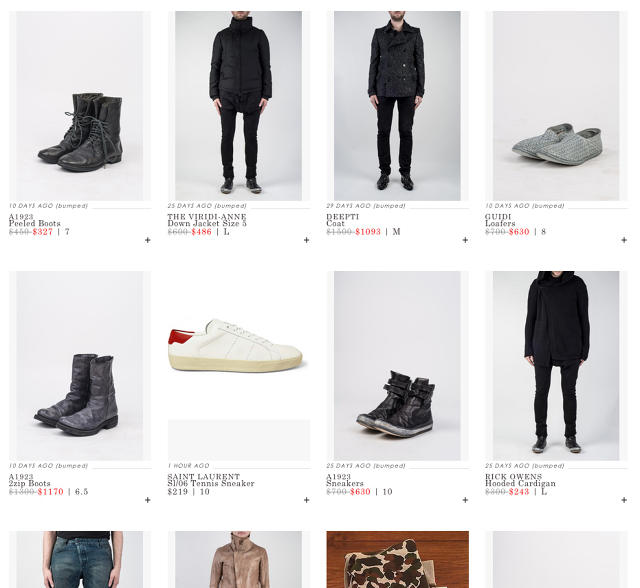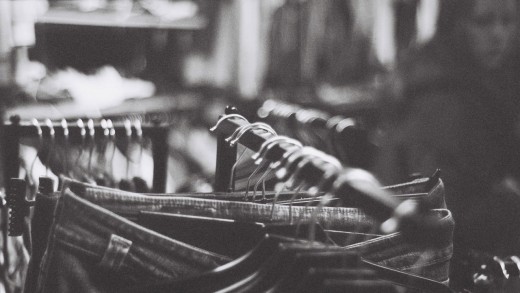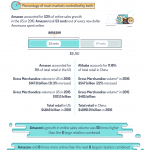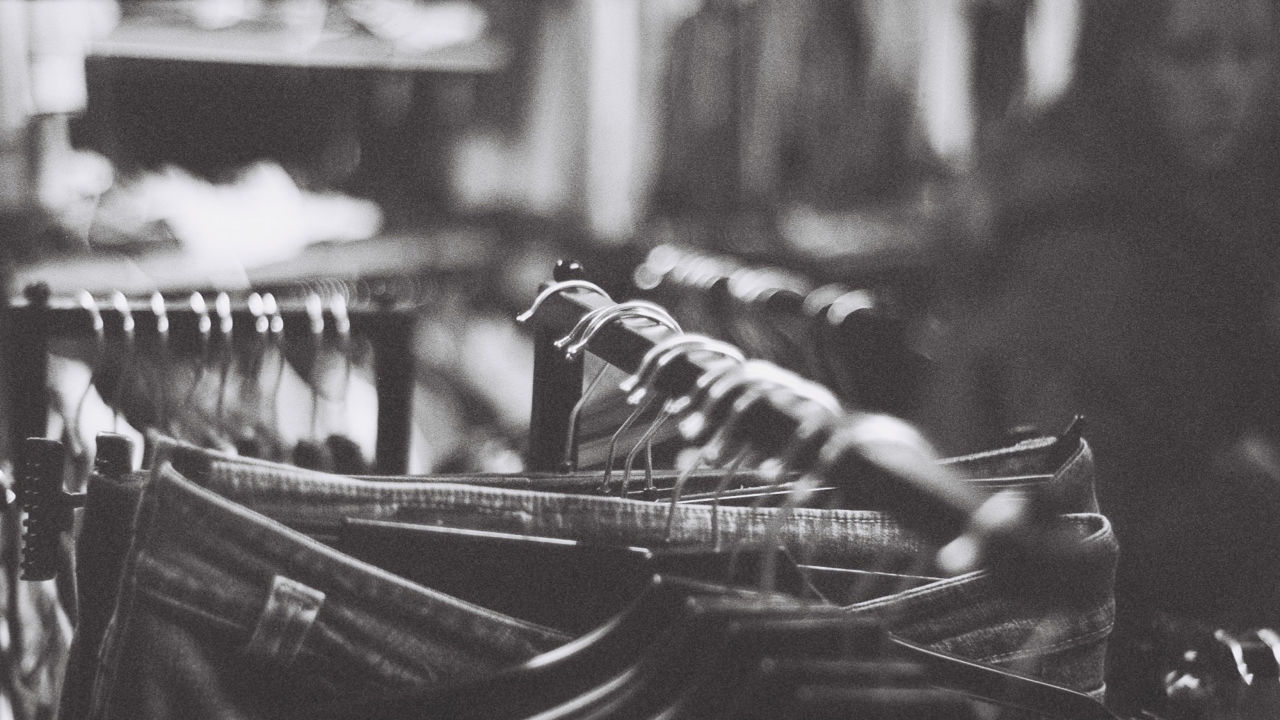How A $700 Pair of shoes changed The publish-eBay clothing Resellers’ panorama without end
Restocking—and decluttering—your closet has by no means been easier because of on-line used-apparel retailers like Grailed and Twice.
April 28, 2015
Arun Gupta simply needed some boots.
This used to be a number of months prior to he began constructing one of the crucial menswear world’s worst-stored buying secrets. specifically, Gupta discovered himself considering long and difficult a few pair of FBTs by Visvim, a japanese dressmaker brand identified for its steadfast devotion to craftsmanship and all-natural materials, like black mud and indigo. It’s Americana refracted in the course of the obsessive prism of japanese streetwear, including the jaw-losing ticket: a new pair of Visvim FBTs can run virtually $seven-hundred.
As a contemporary Yale graduate (and Yale Entrepreneurial Institute fellow) and not using a full-time job in 2012, one of these purchase was understandably out of the question for Gupta. Irresponsible, even. And so, partly out of boredom, but mostly as a result of he might, Gupta started out coding Grailed, a secondhand online market for clothier clothes the place dozens of manufacturers like APC and Our Legacy are resold with the aid of their homeowners. (there’s additionally a Grailed general tier for decrease-market brands like Topman and Uniqlo.)
Now somewhat greater than a yr old, the web site attracts about 10,000 visitors a day—together with the all-necessary eyes of fashion editors and tastemakers. Like so many startups, the web page was once born from the desires of the founder.
“It was principally a enjoyable aspect challenge,” Gupta, who not too long ago doubled the Grailed body of workers to an entire two individuals, tells me over the phone. “i wanted people to use it, and i wanted as a way to buy stuff. I simply principally wished to get the stuff for more cost effective.”
while eBay continues to be the ultimate spot for getting rid of just about the rest you now not need or need—from vehicles to Carhartt—Grailed is part of a new crop of online retail outlets, together with Twice, ThredUp, and others, designed particularly to breathe new existence into up to now owned garments. in many circumstances, these startups have wildly totally different trade models, however they serve the identical primary purposes: to chop down on waste, restrict the sale of fake clothier goods, and to offer consumers another method to procure evenly used sneakers, outerwear, shirts, and pants with no need to sift through a sales rack.
The all-vital handbook that is city Dictionary defines a grail as “the shoe shoeheads and sneakerheads want the most for their collection,” which is usually right, handiest the term has since evolved to use to any coveted piece of apparel. it’s a time period that’s thrown round often in menswear forums like StyleForum, SuperFuture, and Reddit’s r/MaleFashionAdvice. A grail is uniquely private; my grail isn’t essentially yours.

Grailed.com’s structure is designed to offer individuals who historically would have had to sell and alternate their clothes on boards an intuitive method to browse, as in the event that they have been buying on Barneys.com. earlier than Grailed, if anyone wished to sell, say, this $4,500 goat-fur parka by way of Helmut Lang, they had to create a new submit with their asking price, embed a picture hosted on any other website online like Flickr or Imgur, and monitor their replies. If every other user made a proposal, they must coordinate the exchange over e-mail, and behavior the transaction by the use of PayPal.
Grailed takes out quite a lot of the intermediate steps via arranging everything right into a browsable grid that users can prepare by way of dressmaker, type, and size. as soon as a purchase order is made, the transaction—and any relevant disputes must the thing never reach its vacation spot, or possibly if it’s a faux—are taken care of by using PayPal. “i do know a lot of people have considerations with PayPal from a shopper standpoint, however from a industry standpoint, PayPal has been fantastic,” says Gupta, who says that Grailed.com lists as many as 10,000 products a day. “they’ve in reality just right buyer and seller protections.”
Gupta declined to discuss his plans for monetizing Grailed just but, and insisted—because the startup-guy chorus tends to move—that he’s excited about looking to scale. “The promote-through price is so fast,” he adds. “Seventy percent of stuff sells in the first two weeks.”
whereas Grailed caters exclusively to the menswear market, a handful of different web sites in San Francisco are aping the consignment store variation for online. probably the most more amazing (and, at least in my view) useful fashions is Twice, a three-12 months-old company based totally in San Francisco that has raised $23 million from Andreessen Horowitz, among different VC companies, that makes it easy for both men and women to purchase and sell used apparel.
The provider works like this: First, it sends you an enormous plastic bag to fill up together with your calmly used resellable garments. After loading it up with the stuff you don’t need, and double checking that it’s an popular brand on the site (Banana Republic, J. Crew, and Ann Taylor, for example), you mail the bag again to Twice. transport is covered by means of the company.
if your tools is in just right condition and Twice accepts your garments, you get either cash or an additional 25% bonus credit score to make use of within the retailer. it’s consignment long past digital. No want to throw your rags in a massive blue Ikea bag to schlep 10 kilos of stuff downtown. “[Twice] was born out of a frustration with eBay,” says cofounder Noah prepared-Campbell, a former product supervisor at Google. “We knew it used to be fun to buy on eBay, and merchandising is enjoyable and superior. however selling on eBay was once the sort of ache in the butt.”
Twice essentially does all the be just right for you. if they don’t accept your garments for no matter reason, you could pay a fee to have it shipped again to your own home, or the garments get donated. It also handles all of the inventory, too: the whole thing Twice sells is stored in a 25,000-sq.-foot warehouse in San Francisco. It’s a full-scale operation.
“We purchase from our retailers,” says prepared-Campbell, who notes that the corporate has about a million customers general and has processed one hundred fifty tons of apparel and accessories, which it saved out of landfills. “We photograph it, merchandise it, and promote it.”
Some analysts speculate that fast model—or the more or less cheap-to-produce, pattern-driven commerce churned out via endlessly 21 and H&M—is on the decline, and a new wave of young shoppers are as an alternative focusing on buying fewer, high-quality items. In other phrases: buy less, but purchase higher. simplest that argument doesn’t rather hold up to scrutiny: final year, for example, Zara earned $19.7 billion in gross sales, whereas H&M notched $20.2 billion in gross sales, each up from earlier years. An analysis by using Euromonitor concludes that quick-model outlets have an “unbeatable competitive facet” and are, subsequently, “here to remain.”
but the upward thrust of on-line re-shops post-eBay—and seem to be no further than Nasty Gal for a crash path on this—indicates beautiful obviously that there is a market section of customers who would possibly need to declutter their lives, particularly in the event that they wear the identical four or five issues daily. they can’t be omitted. Om Malik, the investor and know-how author, as an example, is selling the unused section of his clothier-wealthy closet on Twice, and donating the proceeds to charity. It’s a fascinating promotional version that Twice cofounder prepared-Campbell is interested by. (Twice can be working on a equivalent closet-emptying spree with Golden State Warrior megastar Andre Iguodala.) As Malik wrote in a beautiful meditation on his blog:
Deep down, for [the] past few years i’ve known that I had accumulated too many issues. I used to be retaining on to things—both bodily and metaphorical that supplied the comfort of earlier, leaving room for nothing new. I used to be protecting on to things that didn’t make any feel. I didn’t be aware of why I had a front room stuffed with furnishings that had began to feel so alien.
today, I a lot prefer few things—well becoming, principally bespoke, and constructed to last into the future after I might be lengthy long gone. The mainstream brands have little room in my life, instead I desire to seek out craftsmanship. i love makers who make, because they don’t comprehend what else to do. These alternatives are onerous, sometimes value extra and take a lot of patience. i’ve learned to purchase issues i love. There isn’t any further room for mere “likes” in my lifestyles.
ultimately, one of the different benefits is that reselling makes big purchases much less of a monetary gamble for patrons. “probably the most causes I was once so desirous about Grailed is as a result of it makes it so much much less of a chance for those who buy something expensive,” says Gupta. In a way, the secondhand economy strips retail of its latent consumerism and bends that appreciation toward the garments themselves. It’s much less about patronizing brands and extra about liking well-made issues for what they are.
while Gupta says he nonetheless in my opinion peruses Grailed daily, he admits that he by no means did in finding that pair of shoes. Which is okay. as a result of now his grail is a new jacket.
fast company , learn Full Story
(202)














